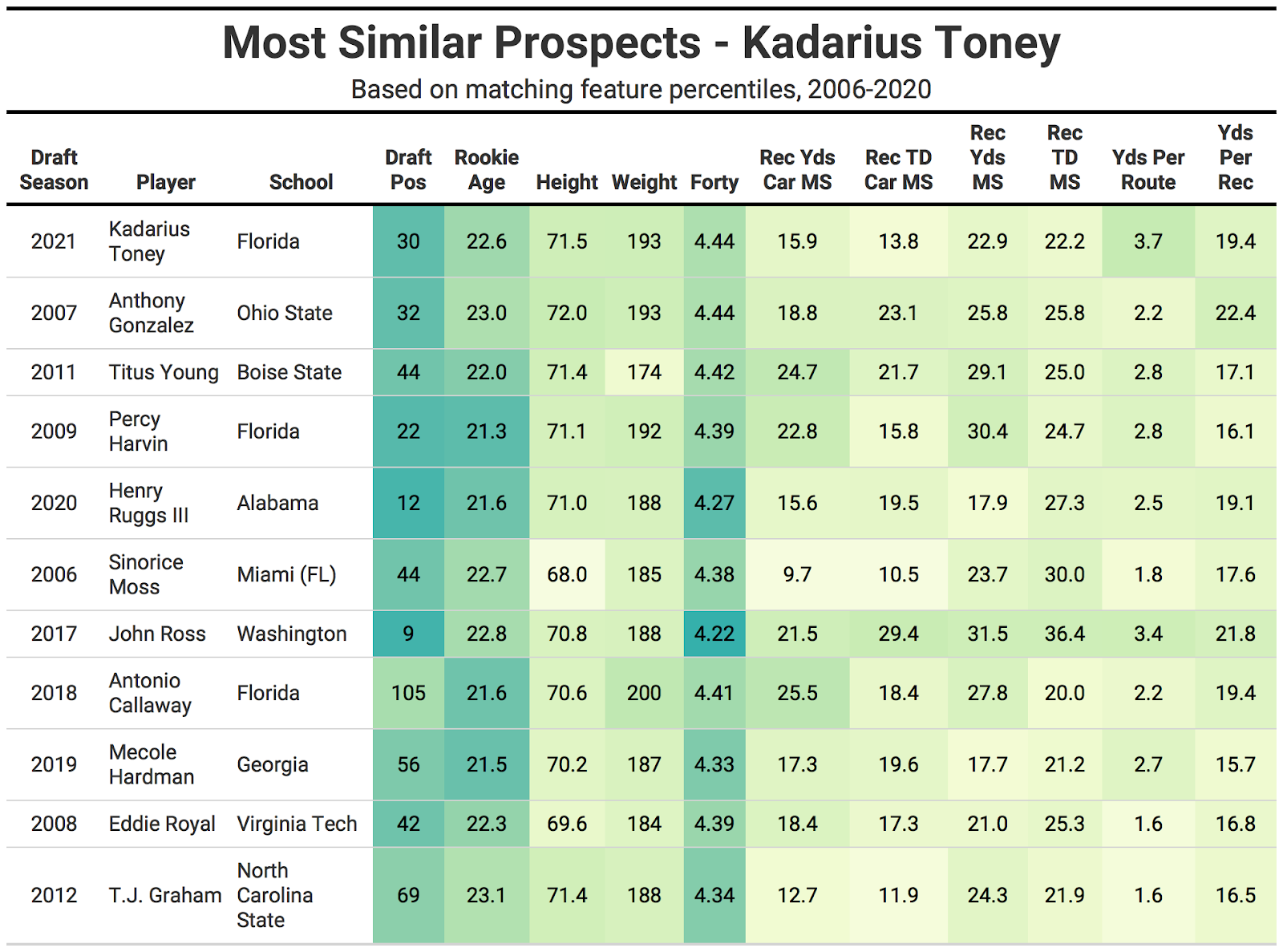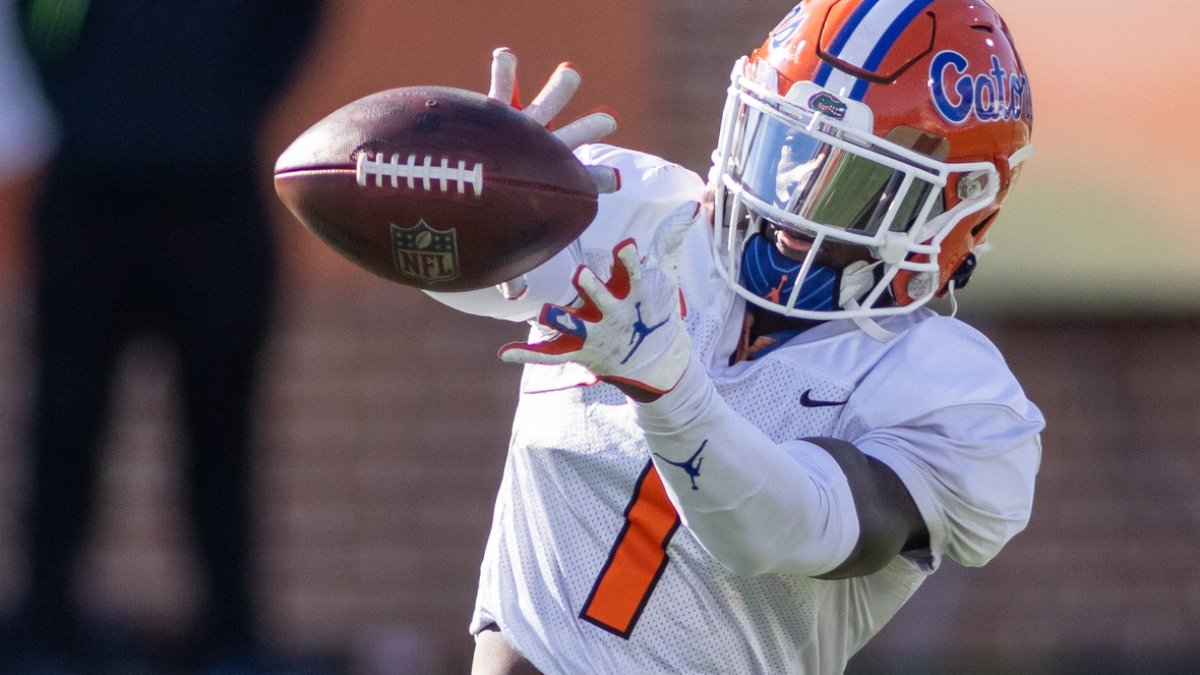Comparing current NFL draft prospects to those of years past is standard procedure in draft evaluation, though most comparisons are built on the memory recall and subjective opinion of the particular evaluator.
This will be the first in a series of articles comparing the 2021 draft prospects to prior years and picking out the most similar comps with a clearly delineated and quantifiable method.
PFF data scientist Eric Eager has done tremendous work building college-to-pro projections, which are built off the robust college data we’ve collected since 2014 and have been applied to exercises like building an “Analytics” Mock. In this analysis, I will use some of our advanced stats for comparison but primarily rely on traditional stats to go back further to compare the 2021 prospects to draft classes going back to 2006.
Without the NFL Scouting Combine this season, the important measurables like weight and 40-yard dash will be reported through the various pro days.
View PFF's 2021 NFL Draft position rankings:
QB | RB | WR | TE | T | iOL | DI | EDGE | LB | CB | S
METHODOLOGY
The comps below were derived from a two-step process. First, I converted all the most statistically relevant stats and measurables to percentiles based on the thousands of prospects who have entered the NFL since 2006 at each position. Then, I filtered the total universe of past prospects by those who had draft positions, weight and 40 times within a 10th percentile in either direction of Kadarius Toney. For undrafted players, I assigned a numerical draft position of 300.
The rest of the matching features were transformed by principal component analysis (PCA). I found the closest statistically comparable players by the euclidean distance between the players' principle components, listed in the top 10 below.
The metrics for PCA are career market shares for receiving yards and receiving touchdowns, best-season market shares for receiving yards and touchdowns, yards per route run, and yards per reception.
For Toney's draft position, I’m using an estimate based on the mock data collected at GrindingTheMocks.com. For the weight and 40 time, I’m using the numbers from his pro day, with a 0.03-second penalty added to the 40 time to reflect the uncertainty of pro-day timed measurements.
Most comparable players
Toney has one of the weaker production profiles among this year's projected first-round picks. He didn’t cross the 20% threshold for market share of receiving yards until his senior season, hovering around 10% his first three years.
His workout metrics were elite in the explosion drills, hitting 40 inches in the vertical (90th percentile) and 11-foot-4 in the broad jump (99th).
The Florida pass-catcher operated primarily out of the slot his final two seasons, and he recorded an average depth of target of 7.0 yards over his collegiate career. He was a dynamic player in space, with the ability to turn schemed throws into long plays.
Who is your draft comp for Kadarius Toney? 🤔
pic.twitter.com/og0TRioNGe— PFF College (@PFF_College) April 13, 2021

There are a lot of busts among Toney’s most comparable players. Only two of the comps have career market shares for yards and touchdowns over 20%, matching the hopeful first-rounder's weaker numbers. Toney’s best season was his final year, and even then, he wasn’t a dominant force in the passing offense.




 © 2024 PFF - all rights reserved.
© 2024 PFF - all rights reserved.